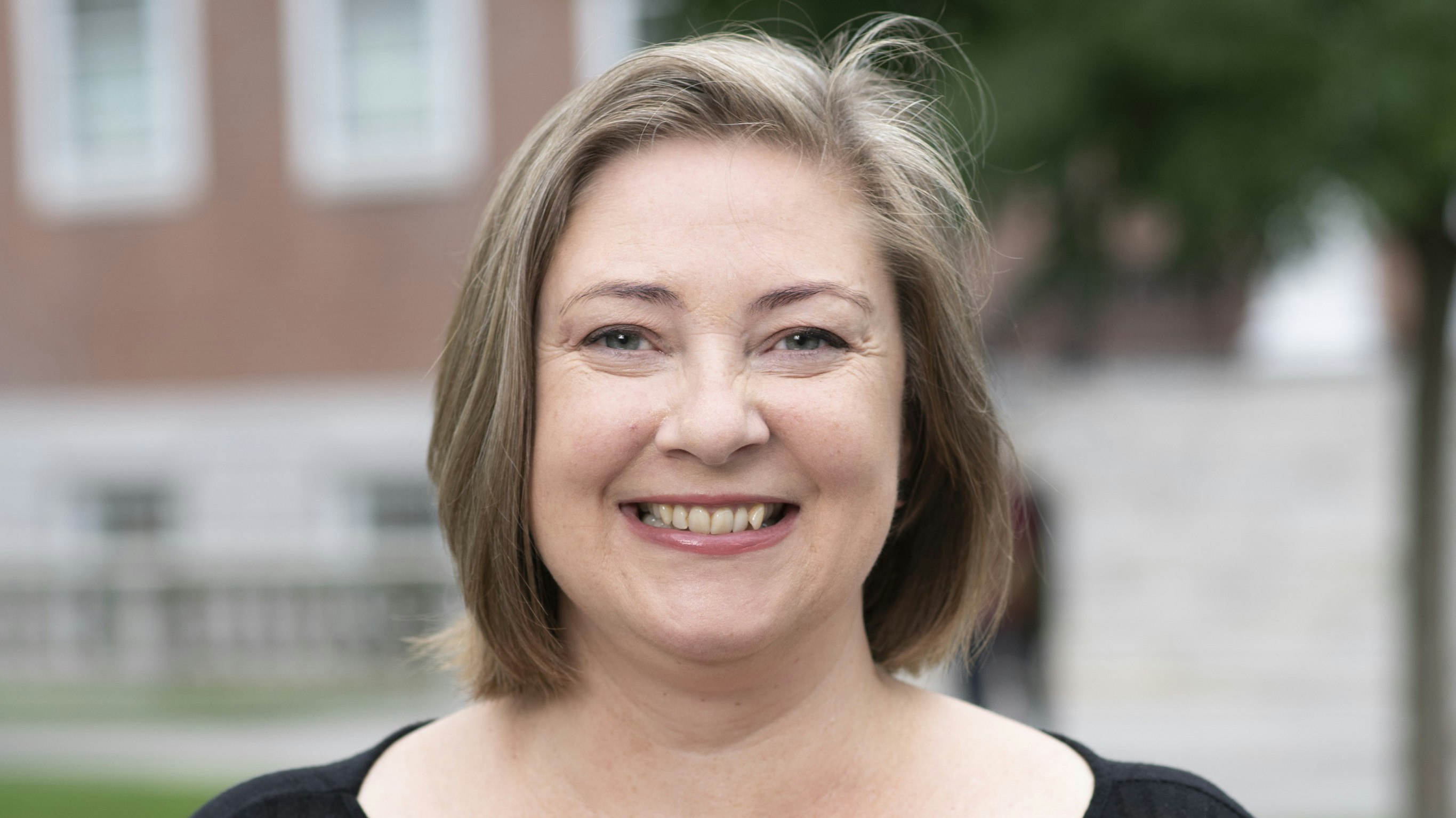Quick Study: Joanne Baker

Joanne Baker, who has a PhD in astrophysics, is a London-based comment editor at the journal Nature and the 2019–2020 Edward, Frances, and Shirley B. Daniels Fellow at the Radcliffe Insittute.
Joanne Baker, who has a PhD in astrophysics, is a London-based comment editor at the journal Nature. This upcoming academic year, as the 2019–2020 Edward, Frances, and Shirley B. Daniels Fellow, she will research and write A Cultural History of the Cosmos (Bloomsbury, forthcoming). The book will incorporate science, history, and culture and present a global perspective on human relationships to the heavens.
Who are your heroes?
Mold breakers, pioneers, and strong women. The bravery, clearheadedness, and skill of the Apollo astronauts spring to mind as we celebrate the anniversary of the 1969 moon landings. And the Swedish schoolgirl Greta Thunberg’s plain speaking over climate change on the world stage is heartening. Harvard’s historic women astronomers inspire me, such as Cecilia Payne-Gaposhkin, who helped pin down the expansion of the universe in the 1920s. Then again, I am envious of talented artists like Barbara Hepworth, Vivienne Westwood, and Nina Simone for their ability to express and stay true to themselves.
Which trait do you most admire in yourself?
Perspective. I like to stand back and see all sides to an issue.
Who is your muse?
Or what: a nice glass of beer or wine in the company of my friends.
Tell us a favorite memory.
Diving with a shoal of hump-headed Maori wrasses off the Great Barrier Reef. After touring beds of coral and swimming with reef sharks, we drifted back up to the surface, floating weightless within a slow-swirling vortex of fish pierced by shafts of sunlight.
Describe yourself in six words or fewer.
Independent, curious, creative, adventurous, humorous, open.
What is your most treasured possession?
My banjo. I’m still learning, but just hearing the instrument makes me smile.
What inspires you?
Travel, being outside in nature, walking by or swimming in the sea, lying in the sun on cliff tops. Going to see exhibitions, plays, and music keeps ideas flowing. Tthis summer, I saw a spectacular version of Shakespeare’s A Midsummer Night’s Dream at a playhouse in London. And I’m looking forward to seeing the Icelandic artist Olafur Eliasson’s exhibition at Tate Modern.
Name a pet peeve.
People walking into you on the street while glued to their mobile phones.
Were your life to become a motion picture, who would portray you?
Juliet Binoche, who somehow manages to encapsulate grace, humor, and depth in the people she plays.
Where in the world would you like to spend a month?
A retreat somewhere beautiful and quiet sounds great right now. Perhaps a traditional ryokan in Japan in the mountains by a crashing stream.
What is your greatest triumph so far?
I see life as an ongoing process of growth and broadening rather than a list of achievements and hurdles. But I am proud that I managed to get a PhD after attending average schools in a remote part of the far west of England. At one time, my family was the most southwesterly in the UK.
Whose tunes do you enjoy?
I love almost all types of music, from Bartók to Béla Fleck and Captain Beefheart. At the moment, I am listening to folk and bluegrass, including Gillian Welch, Sarah Jarosz, and Seth Lakeman. I enjoy seeing live music, and this summer, I went to a jazz festival in the Netherlands to see amazing musicians such as John Zorn and another lineup headlined by Lucinda Williams in Cambridge, UK.
What is your fantasy career?
It would be lots of fun to be a satirical political cartoonist in these times. Or else perhaps head of the UN, to encourage much bigger thinking to fix even some of the problems the planet faces.
Why a cultural history of astronomy?
I want to explore that sense of fascination many people, including myself, have with the night sky and how this has changed over the years and from place to place. For example, my own emotions are mixed—I find the cosmos at once terrifying and beautiful, strange yet familiar. I want to explore those tensions.
How has the way people view the cosmos changed over time?
Past peoples were more familiar than we are with the visual “landmarks” of the night sky. They used it as a “book”—of myths and instructions for living, navigation, hunting, and farming. Today, people know it differently: as a place of fear and novelty, a new frontier to seek resources, its deep mathematical secrets guarded by a few experts.
It seems that scientists make new discoveries about the universe with increasing frequency. How does one keep up?
It’s easier than ever to keep up with discoveries, through news reports, journals like Nature and Science, New Scientist and Scientific American, plus oodles of popular science books. These days it is seen as an essential part of research to share results with the public, as bodies including NASA and many societies do really well.
A decade after earning your PhD in astrophysics, you earned a master’s in landscape architecture. What drew you to this field?
I have broad interests across the arts as well as the sciences, and I found astrophysics research confined in one tiny niche and also, perhaps, far from the pragmatic needs of society. My interest in nature, writ large, and design drew me to study landscape architecture, initially in extension courses and then for a part-time degree, so that I could potentially practice. It’s a fantastic field with huge scope. But then I was fortunate to get a great job in science publishing, which offers me a grand vista of research and a chance to help shape fields and their impacts on the world through words.







